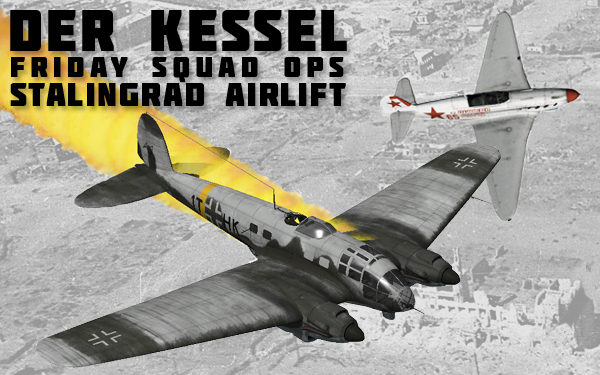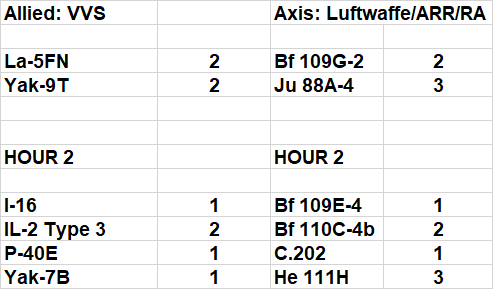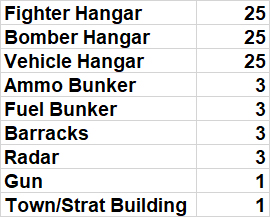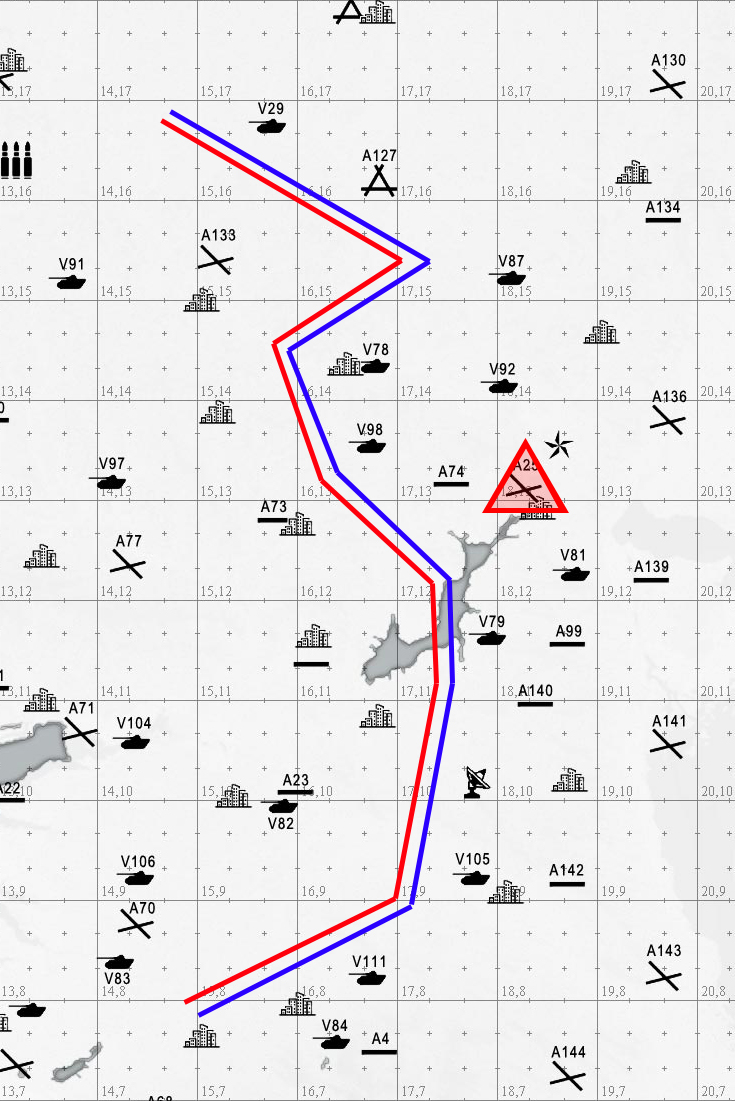Der Kessel - FSO Stalingrad Airlift

When the spring thaw returned to Russia in early spring of 1942, the German Army began to breathe a sigh of relief and with that breath began to energize and realize that they had survived the most brutal encirclement battles in the history of warfare to date. The area where the German Northern and Central sectors of the Eastern Front met became the most desperate areas during that winter of 1941/42. The areas around Demyansk became surrounded and survived largely by Luftwaffe air lift of food, supplies and ammunition into the pocket. Ju52 transport and other German bomber aircraft and their pilots were pushed to the limits transporting in nearly 60,000 tons of food, 30,000 replacement troops and evacuating 36,000 wounded and other personnel over the course of that winter siege. The encirclement of the Demyansk Pocket was finally broken on April 21st, 1942 after a breakout by German forces that hinged directly on the success of a costly air bridge maintained by the Luftwaffe.
When the mud dried, and the roads became passable, the German offensive began again but this time with a new directive and destination. While the Northern and Central fronts remained in relative position, Army Group South bolted across the southern steppe crossing the Donets and the Don rivers and capturing the cities of Kharkov, Voronezh and Rostov; by August the German Sixth Army had reached the outskirts of that infamous city on the Volga. The Luftwaffe fighters kept air superiority over Stalingrad while the bombers reduced the city to rubble. The fighting became a brutal building to building struggle all the way to the shores of the Volga, where the German Army nearly had complete control of the city. Losses were high and the fighting was taking its toll on both sides, and winter was here again. Just like they had the previous winter, the Soviets began preparing for a massive offensive this time at the weaker Italian, Hungarian and Romanian flanks of the German 6th Army in Stalingrad.
On November 19th 1942, the Soviets launched Operation Uranus and smashed through the weak flanks of the German Army. The Soviet forces joined up just four days later successfully trapping nearly 265,000 soldiers of the German, Italian, Romanian, and Croatian Armies inside Stalingrad and the surrounding areas. Shortly after the encirclement Goering told Hitler that the surrounded 6th Army could be supplied by Air Bridge just like the smaller Army Korps at Demyansk the previous winter. They estimated that the German Army surrounded at Stalingrad needed at least 300 tons of supplies a day at minimum, although it was really at least 500 tons for them to really remain operational. To supplement the force of transport aircraft, German bomber aircraft, mainly the He-111, were pressed into transport service. The Luftwaffe could only reach the 300 ton goal a few days and averaged only 117 tons a day during the 11 week encirclement.
The last airfield inside the pocket was Pitomnik airfield and the entire Air Bridge relied on this base to supply and evacuate the wounded of the trapped 6th Army. A volunteer squadron was formed by elements of JG 3 and they defended Pitomnik until it was overan on January 16th 1943. In two months of fighting, Airfield Defense Squadron Pitomnik was credited with 130 aerial victories. After the capture of Pitomnik and Gumrak a few days later, the German 6th Army could only be supplied by Air drop. It only took a few weeks for the last pockets of resistance to collapse and surrender. On February 2nd, 1943, the German 6th Army under command of newly promoted Field General Paulus surrendered to the Soviets. Around 110,000 German and other Axis country soldiers were taken prisoner, only about 6,000 ever returned to Germany. In the aerial aspect of the battle, the Luftwaffe lost 488 aircraft, including 1/3 of their entire fleet of Ju52s. 1100 Airmen were lost including some of the most experienced bomber and transport pilots, a loss of aircraft and aircrew that the Luftwaffe would never recover from.
In this FSO we go back in time to when the fate of an entire Army rested solely in the hands of the Luftwaffe. Can the German Luftwaffe ferry enough supplies in and evacuate the wounded out of the surrounded city? Can the Soviet Air Force destroy the air lift operations and crush the last remaining Axis forces trapped in the city?
AIRCRAFT

AIRCRAFT RULES
- Fighter ALT CAP 20K
- JABO/Bomber/Transport ALT CAP 14K
- He 111H - All Bomb Packages Disabled
- Bf 109G-2 - 250KG Bomb Disabled
- IL-2 Type 3 - 37mm Disabled
- La 5FN - 2x 100KG Bombs Disabled
- Yak-9T - 37mm Disabled
AIRCRAFT SCORING

OBJECTIVE SCORING


HOUR 1

SETTINGS:
- Blkseaw (Black Sea Winter) terrain
- Icon Range - Friendly 3k, Enemy 3k.
- No Radar
- Fighter and Bomber Warning Range - 63360 (12 miles)
- Tower Range - 63,360 (for display to match the above Fighter and Bomber Warning)
- External view for bombers (F3) - On
- Friendly Collisions - Off
- Enemy Collisions - On
- Kill Shooter - Off
- Fuel - 1.0
- Ack - 0.4
- Formations - Enabled
- Bombsite calibration - Main Arena Standard
- Visibility - 17 miles
- Object Downtime full (200)
- Winds - None
- Game Clock:
Frame 1: 09:00
Frame 2: 12:00
Frame 3: 15:00
Designed by Nefarious
- Blkseaw (Black Sea Winter) terrain
- Icon Range - Friendly 3k, Enemy 3k.
- No Radar
- Fighter and Bomber Warning Range - 63360 (12 miles)
- Tower Range - 63,360 (for display to match the above Fighter and Bomber Warning)
- External view for bombers (F3) - On
- Friendly Collisions - Off
- Enemy Collisions - On
- Kill Shooter - Off
- Fuel - 1.0
- Ack - 0.4
- Formations - Enabled
- Bombsite calibration - Main Arena Standard
- Visibility - 17 miles
- Object Downtime full (200)
- Winds - None
- Game Clock:
Frame 1: 09:00
Frame 2: 12:00
Frame 3: 15:00
Designed by Nefarious